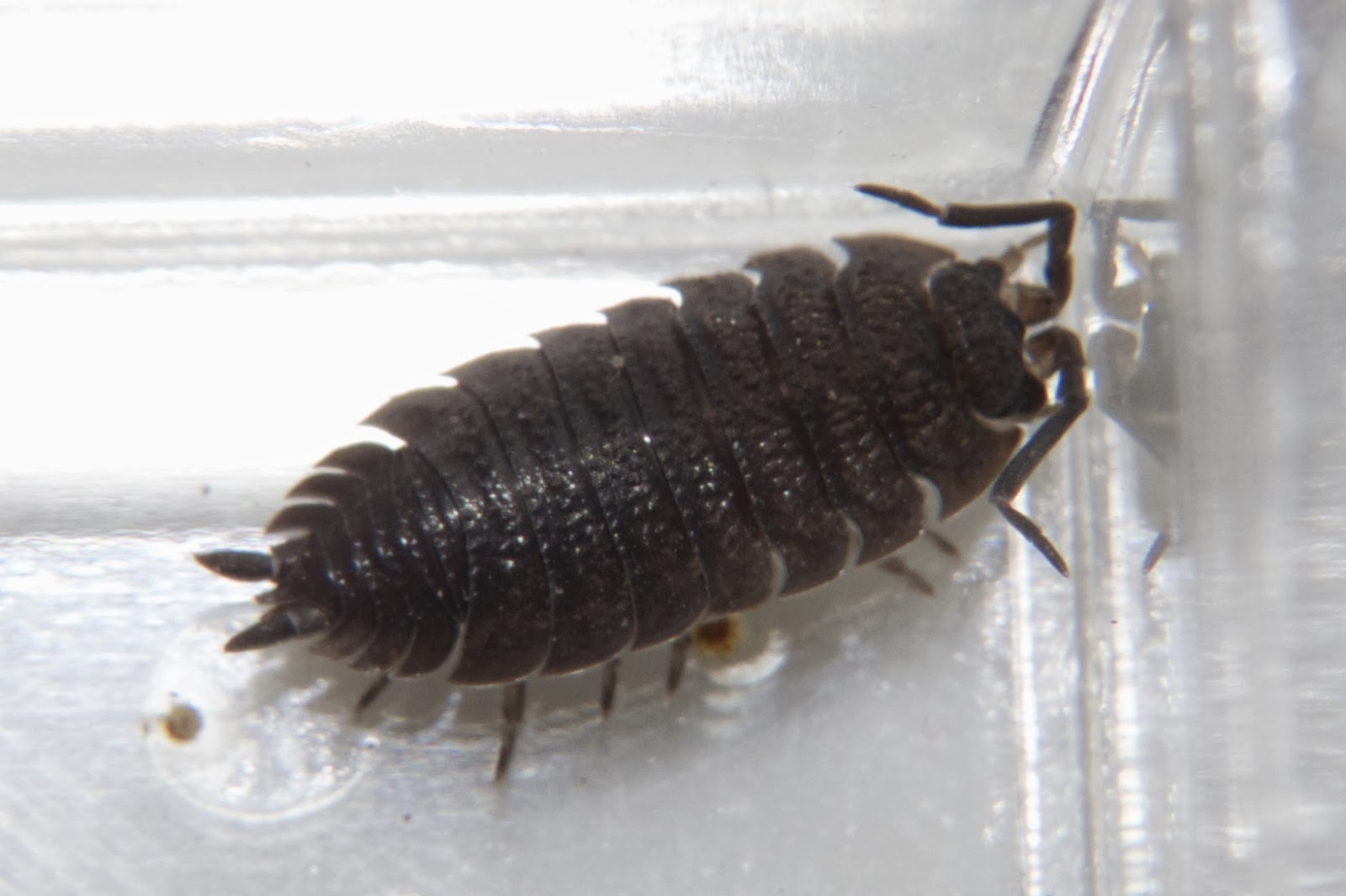Porcellio scaber - Common Rough Woodlouse

Found this little chappie wondering around the floor of the downstairs toilet the other day. A little bit of detective work on the web and using the few books insect reference books that detail woodlice, I was able to make a tentative identification and name him a common rough woodlouse. That is not demeaning him in anyway, but that's his common name. He also goes by the much more impressive name of Porcellio scaber. Common rough woodlice are considered native to mainland Europe, but has spread throughout the world, including onto isolated islands such as Hawaii and Marion Island (located between Africa and Antarctica) and is found on every continent, excluding Antarctica. This spread has probably been aided by export of plant material. Part their success could be due to the wide range of habitats they live in. They live under leaf litter, rocks, and fallen logs in forests, meadows, and gardens, and are frequently found in splash zones, dunes and salt marshes. Th

